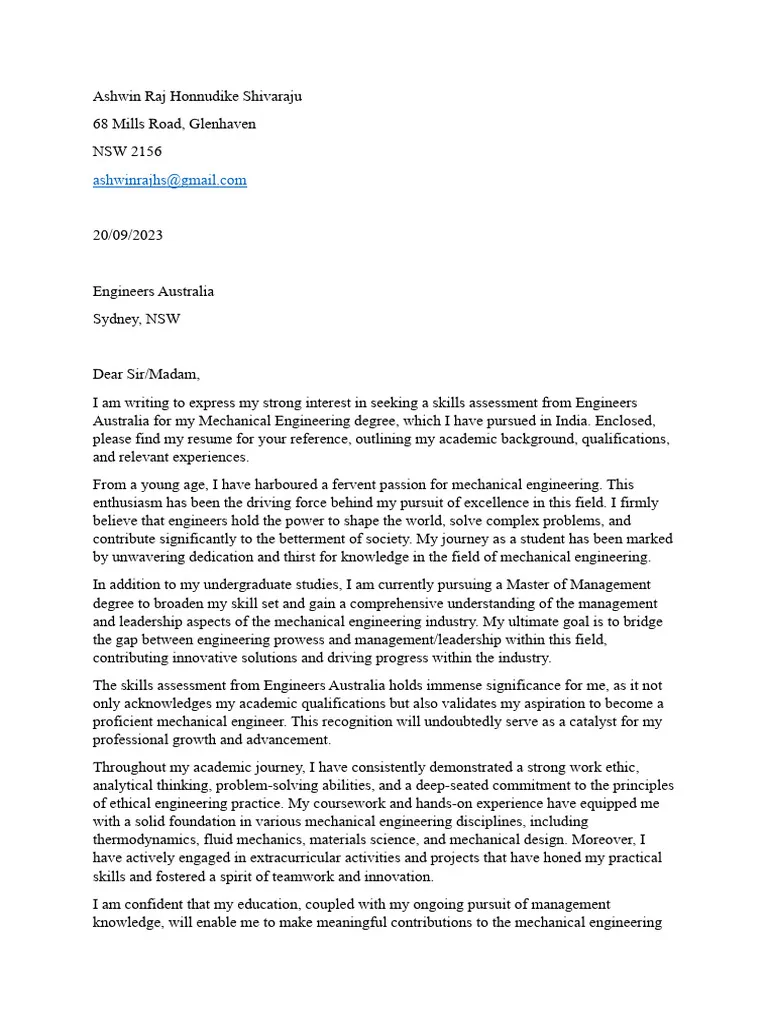Understanding the Petroleum Engineering Cover Letter
In the competitive world of petroleum engineering, a well-crafted cover letter is your first opportunity to make a lasting impression. More than just a formality, this document acts as your personal introduction, providing context to your resume and showcasing your unique qualifications for a specific role. It’s your chance to demonstrate your understanding of the company, the industry, and the specific job requirements. A compelling petroleum engineering cover letter goes beyond listing skills; it tells a story, highlighting your passion for the field and your potential to contribute to the organization’s success. A strong cover letter significantly increases your chances of landing an interview and ultimately, securing your dream job in the oil and gas sector.
Why a Strong Cover Letter Matters
A strong cover letter differentiates you from other applicants by providing a narrative that your resume alone cannot convey. It allows you to explain gaps in your employment history, elaborate on significant projects, and express your enthusiasm for the specific opportunity. It demonstrates your communication skills, attention to detail, and professionalism, all of which are crucial in petroleum engineering. Employers use cover letters to assess your personality and whether you are a good fit for their company culture. A well-written letter can highlight how your skills and experience align with the company’s values and the specific requirements of the job, setting you apart from candidates who rely solely on their resumes.
Highlighting Your Petroleum Engineering Skills
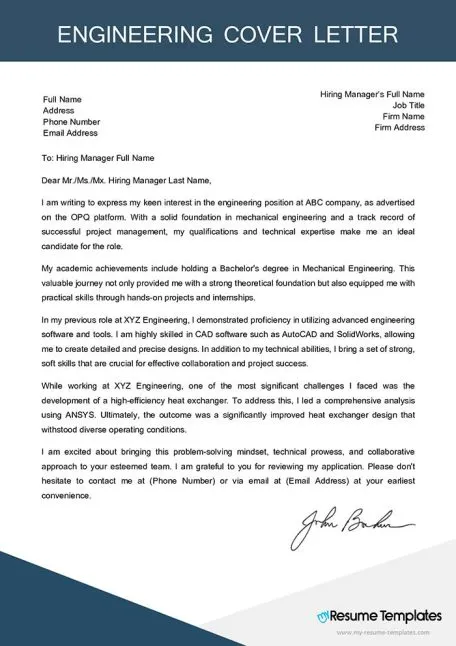
Your cover letter is the perfect place to showcase your relevant skills and expertise. This involves not only listing your technical abilities but also demonstrating how you’ve applied them in real-world situations. Focus on the skills that are most relevant to the job description, providing concrete examples of your achievements. Illustrate your understanding of petroleum engineering principles and your ability to apply these to solve complex problems. Be specific about the tools, software, and methodologies you are proficient in, such as reservoir simulation, well planning, or production optimization. Showing the ability to quickly grasp and apply new technologies is crucial in a field that’s constantly evolving.
Technical Skills
Technical skills are the backbone of any successful petroleum engineering cover letter. Focus on demonstrating proficiency in areas like reservoir modeling, production engineering, drilling and completion, and enhanced oil recovery techniques. List the software and tools you are familiar with, such as Petrel, Eclipse, or HYSYS. Mention any specific projects where you utilized these skills and the results you achieved. For instance, did you optimize a well’s production rate, reduce drilling costs, or improve the efficiency of a reservoir simulation? Provide quantifiable data whenever possible to highlight the impact of your technical skills. It is also important to demonstrate an understanding of industry standards and regulations.
Soft Skills
While technical skills are vital, employers also value soft skills such as communication, teamwork, problem-solving, and leadership. Highlight instances where you effectively communicated complex technical information to non-technical audiences. Describe how you collaborated with a team to overcome challenges or achieve project goals. Provide examples of your problem-solving abilities, showing how you analyzed situations, identified solutions, and implemented them successfully. Show initiative and the ability to take on leadership roles when necessary. In the petroleum industry, projects frequently involve working in teams, so showcasing these abilities is crucial.
Tailoring Your Cover Letter

A generic cover letter is unlikely to impress; customization is key. Every cover letter should be tailored to the specific job and company you’re applying to. Review the job description carefully and identify the key requirements and desired qualifications. Then, align your skills, experience, and accomplishments with these requirements. Show how your background makes you an ideal fit for the specific role. This demonstrates to the employer that you have taken the time to understand their needs and that you are genuinely interested in the opportunity. Address the employer by name if possible and personalize your content to demonstrate your interest and understanding.
Researching the Company
Before writing your cover letter, thoroughly research the company. Understand its mission, values, and recent projects. Identify its current challenges and opportunities. This information will allow you to demonstrate how your skills and experience can help the company achieve its goals. Visit the company’s website, read industry publications, and check social media for insights. Use this knowledge to personalize your letter, demonstrating your interest in the company and your understanding of its business. Showing that you’ve done your homework significantly increases your chances of getting noticed and securing an interview.
Addressing the Hiring Manager
Whenever possible, address your cover letter to the hiring manager or the person responsible for making hiring decisions. This shows that you have taken the initiative to find out who will be reading your application, which gives a strong first impression. If you can’t find a name, try using a professional salutation such as “Dear Hiring Manager” or “Dear [Department Name] Team.” Avoid generic greetings such as “To Whom It May Concern.” Always research the company’s website or LinkedIn to find the appropriate contact person. Addressing your letter personally demonstrates your attention to detail and initiative, making your application more memorable.
Structuring Your Petroleum Engineering Cover Letter
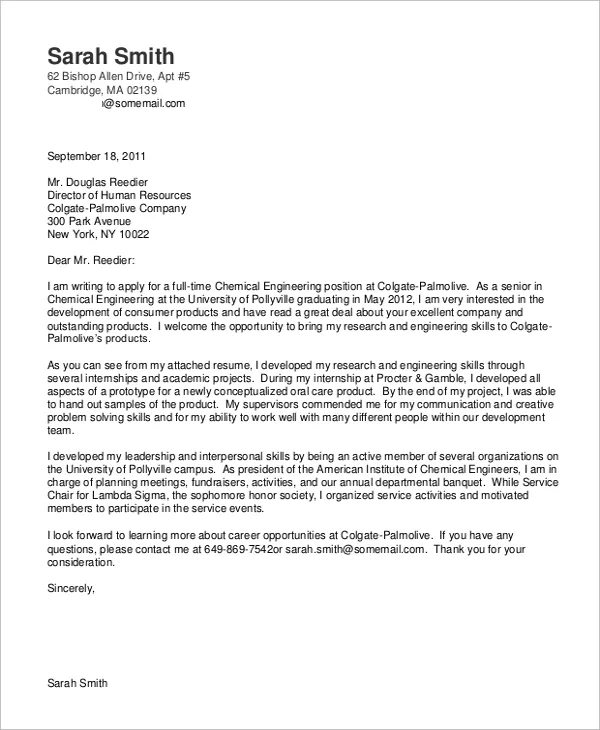
The structure of your cover letter is just as important as its content. A well-organized letter is easy to read and allows the hiring manager to quickly grasp your qualifications. Follow a standard format, ensuring that each section serves a specific purpose. Your cover letter should include an introduction, body paragraphs, and a conclusion. Use clear headings and concise paragraphs to enhance readability. Make sure the flow of information is logical and easy to follow. A well-structured letter makes a positive impression and increases the likelihood that the hiring manager will read and consider your application carefully.
Header and Contact Information
Begin your cover letter with a professional header. Include your name, address, phone number, and email address. Make sure your contact information is up-to-date and easily accessible. If you have a LinkedIn profile or online portfolio, consider including a link to it as well. This allows the hiring manager to easily learn more about your experience. Ensure the header is formatted clearly, and the contact information is accurate. This is the first impression, so it should be professional and error-free.
Opening Paragraph
The opening paragraph should immediately grab the reader’s attention. State the specific position you are applying for and where you found the job posting. Briefly mention why you are interested in the role and the company. Make a strong statement that showcases your enthusiasm and how your skills align with the company’s needs. Keep it concise and focused, providing a clear statement of intent. This section should also highlight your unique selling point – what makes you the ideal candidate for this position in petroleum engineering.
Body Paragraphs
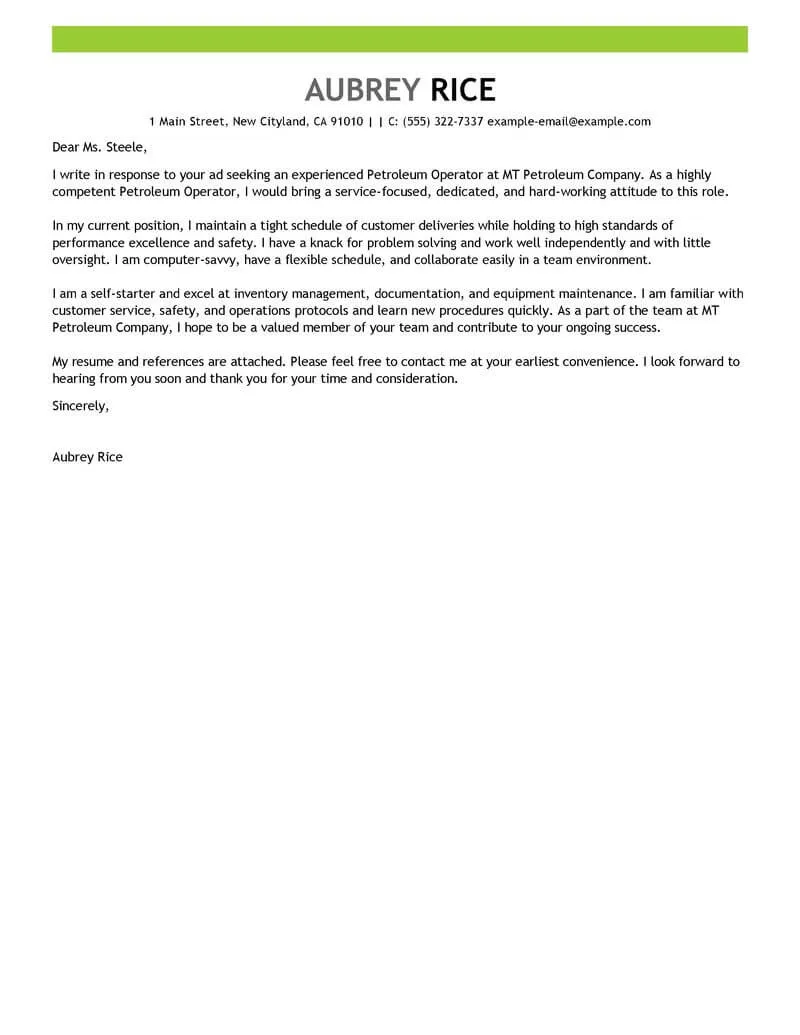
The body paragraphs are the core of your cover letter. This is where you provide details about your skills, experience, and accomplishments. Each paragraph should focus on a specific aspect of your qualifications. Use the STAR method (Situation, Task, Action, Result) to describe your accomplishments, providing concrete examples of how you have made a positive impact. Quantify your achievements whenever possible, such as by mentioning how you improved production rates, reduced costs, or enhanced efficiency. Show how your previous experiences make you an ideal fit for the specific job. The body section should demonstrate the value you will bring to the company.
Closing Paragraph
In the closing paragraph, reiterate your interest in the position and the company. Thank the hiring manager for their time and consideration. Express your eagerness for an interview and indicate how you can be contacted. Keep it professional and avoid being overly casual. Proofread this section carefully to ensure there are no grammatical errors or typos. A strong closing paragraph summarizes your key qualifications and leaves a positive lasting impression, encouraging the hiring manager to contact you for an interview.
Showcasing Your Achievements
Highlighting your accomplishments is crucial for making a strong impression. Instead of simply listing your responsibilities, focus on your achievements and the impact you made in previous roles. Use the STAR method to structure your examples. Clearly describe the situation, the task you were assigned, the actions you took, and the results you achieved. This approach allows you to provide concrete examples of your skills and demonstrate your ability to deliver positive outcomes. Focus on your best and most relevant achievements that directly relate to the requirements of the job.
Quantifying Your Accomplishments
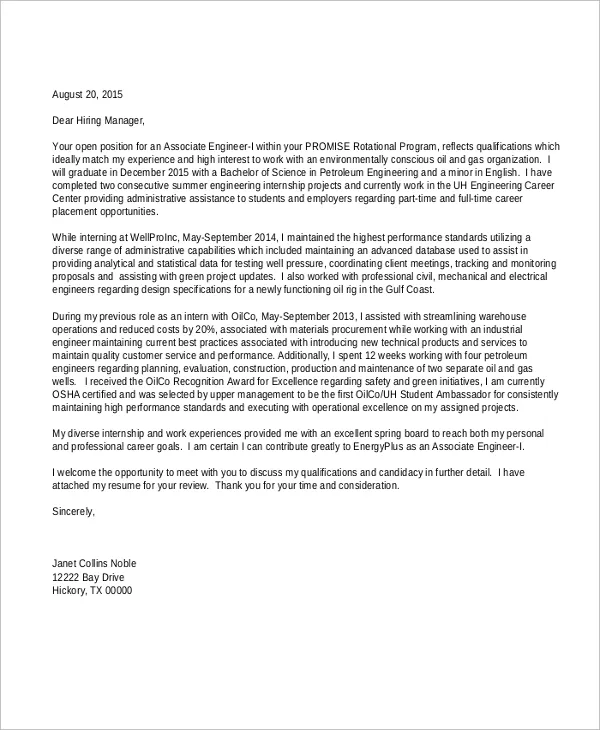
Whenever possible, quantify your achievements to demonstrate the impact of your work. Instead of saying you “improved efficiency,” state that you “increased production efficiency by 15%.” Use numbers, percentages, and other metrics to provide concrete evidence of your accomplishments. This makes your achievements more credible and easier to understand. For example, if you managed a project, mention the budget, the team size, and the deadlines that were met. Quantifying your accomplishments adds weight to your claims and showcases your ability to produce tangible results.
Using Action Verbs
Use strong action verbs to describe your accomplishments and skills. Action verbs add dynamism to your cover letter and help you stand out from the crowd. Start your sentences with verbs that convey what you did, such as “managed,” “developed,” “implemented,” “analyzed,” “optimized,” or “led.” Avoid passive voice; use active voice to describe your actions. Be specific about the tasks you performed and the results you achieved. Action verbs will help you make your cover letter more engaging and impactful. The right words can make a significant difference in the impression you create.
Formatting and Presentation
The formatting and presentation of your cover letter are just as important as its content. A well-formatted letter is easy to read and gives the impression that you are professional and organized. Use a clear and professional font, such as Times New Roman or Arial. Ensure your cover letter is well-structured with consistent spacing and proper margins. Avoid using excessive formatting or unusual fonts that can distract the reader. Proofread carefully for any errors in formatting or presentation before submitting your application. A clean and well-formatted cover letter demonstrates your attention to detail and professionalism.
Font and Readability
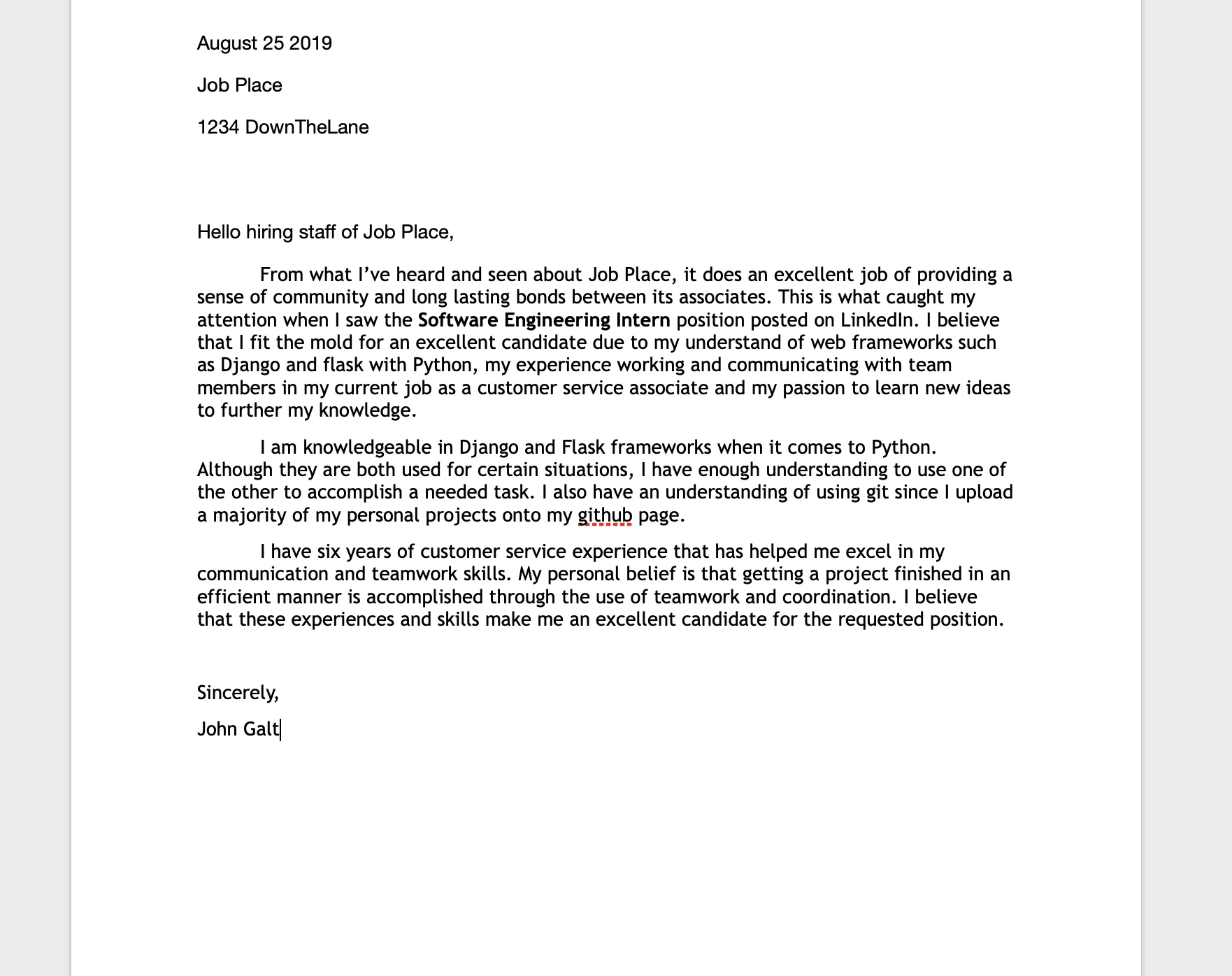
Choose a font that is easy to read, such as Arial or Times New Roman, and use a font size between 10 and 12 points. Ensure that there is sufficient spacing between lines and paragraphs to enhance readability. Avoid using excessive formatting, such as bolding or underlining text unless necessary. Keep the letter concise and to the point. Aim for a one-page cover letter unless the job requirements specifically request more. A readable font and layout ensure your message is easily understood.
Proofreading and Editing
Proofreading and editing are crucial steps in ensuring your cover letter is polished and professional. Carefully review your cover letter for any grammatical errors, spelling mistakes, or typos. Pay close attention to punctuation and sentence structure. Read your letter aloud to catch any awkward phrasing or unclear sentences. Consider having a friend, family member, or career counselor review your letter. A second pair of eyes can often catch mistakes you might have missed. Proofreading and editing demonstrate your attention to detail and commitment to quality. An error-free cover letter makes a strong impression.
Following Up
After submitting your cover letter and resume, it’s important to follow up on your application. Typically, it’s recommended to wait one to two weeks before sending a follow-up email. In your follow-up email, reiterate your interest in the position and briefly mention your qualifications. Thank the hiring manager for their time and consideration and ask if they have any questions. Following up shows that you are proactive and interested in the opportunity. It also allows you to reinforce your interest and remind the hiring manager of your application. If you have not heard back after a reasonable period, consider it a sign that you should move forward.
